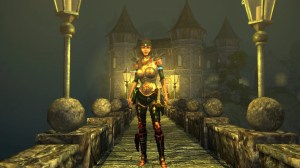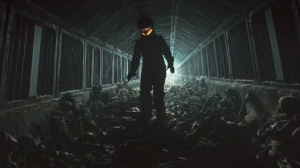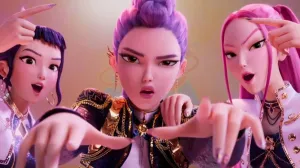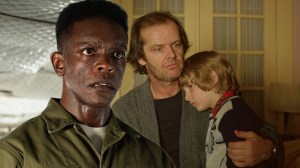Intimate character-driven dramas don’t always carry the weight that The Righteous manages to shoulder for its entire run time, but writer/director/star Mark O’Brien has put together a heavy drama that tinges with horror. Luckily, his already-tight script is bolstered by an A+ performance from star Henry Czerny, who manages to be captivating at every turn, and O’Brien is no slouch himself, either. What begins as an intimate character piece continues to evolve and build as it goes on, morphing into something new and unique that, in the end, resulted in me writing just one word in my notebook while watching: “captivating.”
Videos by ComicBook.com
When The Righteous begins, a family has lost their child, with the big picture of what happened unfolding throughout, as this shaky ground proves for the perfect starting place. As an audience, we’re forced to catch up to the world and the characters and, by giving us questions to consider and decipher, O’Brien has created an immediate connection between us and the people on-screen. As Czerny’s Frederic Mason grapples with questioning God and how he can move along, O’Brien’s mysterious character appears and sends things spiraling down a road that is unpredictable through the very end. Is he a man? A demon? The movie isn’t explicitly interested in answering this, but uses this uncertainty as a bridge.
Perhaps the most remarkable thing about O’Brien’s work as a director is that he employs the on-set trickery needed to pull off movement and surprises in camera that keep the audience on edge. O’Brien channels Méliès by incorporating magic tricks into what’s happening on set, always to shocking effect and always bolstering the mood of the scene and driving the narrative home. One instance, in particular (perhaps done with an unseen cart off-camera), features a character seemingly gliding forward, maintaining the speed of a tiger going in for the kill. It’s a shocking moment narratively, but the simplicity of it as a filmmaking trick amps it up from a technical perspective.
On the other side of the technicals of making the movie is O’Brien’s choice to shoot the film in black and white. Perhaps it was for an economic reason, but it feeds into a major thematic throughline of the entire piece, that the things we do in life are not stark contrasts but shades of grey (in addition to seemingly evoking The Night of the Hunter). Putting that aside, the aesthetic makes for a rich viewing experience anyway, as the intense dialogue exchanges remain visually enchanting, in part from the tremendous work the actors are doing, but also because the images themselves are never dull.
Sometimes the phrase “slow burn” can read like a dirty word to horror fans, especially as some indie distributors seem to use it almost as a calling card, but when done effectively and with a proper build-up, it works. O’Brien and Czerny trade their dialogue like fighters in the ring and, by the end, these exchanges carry the weight of punches and it can be emotionally draining.
The Righteous has so much going on within its character dynamics and shocking third act that creates layers in its storytelling. The tragedy of this movie is a lot of what makes The Righteous so amazing are the qualities that make it nearly toxic to a mainstream audience: it’s black and white, largely a metaphor, mostly just actors talking, and there are no CGI effects at the forefront. Those willing to take the journey will come out the other side surprised. It doesn’t matter if you want to approach this from the surface level of the narrative or if you want to dig into the religious subtexts of it or if you want to ponder the implications of O’Brien’s role, as there will be something there that is rewarding to any viewer.
Rating: 5 out of 5
The Righteous had its world premiere at Fantasia International Film Festival.








